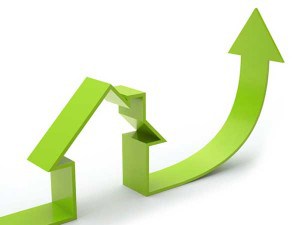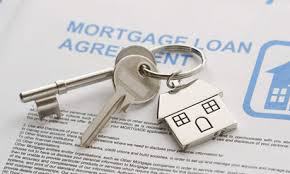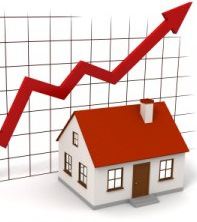South Bay Vision – Market Update
Blog, Buying, Market Minutes, Market Updates, Real Estate News, Selling | Dunham Stewart According to the latest TrendGraphix reports for the beach cities for the period May 13th – July 13th compared to the same period last year you will see the number of properties for sale increased in Hermosa, Redondo and El Segundo however decreased slightly in Manhattan Beach. Although months of inventory have increased since the same time last year, we’re looking at approximately 1.9 months of available inventory for most of the beach cities including El Segundo.
According to the latest TrendGraphix reports for the beach cities for the period May 13th – July 13th compared to the same period last year you will see the number of properties for sale increased in Hermosa, Redondo and El Segundo however decreased slightly in Manhattan Beach. Although months of inventory have increased since the same time last year, we’re looking at approximately 1.9 months of available inventory for most of the beach cities including El Segundo.
Lawrence Yun, NAR chief economist, says the housing market is stabilizing, but ongoing challenges are impeding full sales potential. “Activity is notably higher than earlier this year as proces have moderated and inventory levels have improved,” he said. “However, supply shortages still exist in parts of the country, wages are flat, and tight credit conditions are deterring a higher number of potential buyers from fully taking advantage of lower interest rates.”
Pending home sales in the West inched 0.2 percent in June to 95.7, but remains 16.7 percent below June 2013.
Please enjoy. Should your plans include real estate purchase and sales, please call or email with questions – and as always, thanks for your referrals!
* Sources: TrendGraphics, C.A.R.

 There is very little doubt that the real estate market is on much firmer ground that it was five years ago. Along the California coast, it’s not merely challenging to find reasonably priced real estate – it’s nearly impossible. Home values are rapidly rising and a confluence of factors will likely continue to drive the market even higher. Pent-up demand, job growth and still-slow mortgage rates continue to put pressure on home prices. The median price of a home in Los Angeles County rose by 5.9 percent in June, compared with the same month a year ago, while the number of homes sold dipped by 7.5 percent, a real estate information service announced today. According to DataQuick, the median price of a Los Angeles County home was $450,000 last month, up from $425,000 in June 2013. A total of 6,792 homes were sold in the county, down from 7,342 during the same month the previous year. In many markets price appreciation has slipped into the more sustainable single-digit range, compared with gains exceeding 20 percent this time last year. Home values are rrising and a confluence of factors will likely continue to drive the market even higher. Consider the following:
There is very little doubt that the real estate market is on much firmer ground that it was five years ago. Along the California coast, it’s not merely challenging to find reasonably priced real estate – it’s nearly impossible. Home values are rapidly rising and a confluence of factors will likely continue to drive the market even higher. Pent-up demand, job growth and still-slow mortgage rates continue to put pressure on home prices. The median price of a home in Los Angeles County rose by 5.9 percent in June, compared with the same month a year ago, while the number of homes sold dipped by 7.5 percent, a real estate information service announced today. According to DataQuick, the median price of a Los Angeles County home was $450,000 last month, up from $425,000 in June 2013. A total of 6,792 homes were sold in the county, down from 7,342 during the same month the previous year. In many markets price appreciation has slipped into the more sustainable single-digit range, compared with gains exceeding 20 percent this time last year. Home values are rrising and a confluence of factors will likely continue to drive the market even higher. Consider the following:
 There’s been a dramatic change in the housing market lately, and it’s almost all good news for homebuyers. Home shoppers may find there’s good reason to breathe a sigh of relief this summer.. They pointed to higher inventories, fewer bidding wars, and slowing home prices as welcoming signs for home buyers this year.What we are seeing is homebuyers who have become more disciplined than before, still pouncing on the A+ homes in the best school districts, but being more careful with the up-and-comers. As we head into summer, here are a few thoughts to consider:
There’s been a dramatic change in the housing market lately, and it’s almost all good news for homebuyers. Home shoppers may find there’s good reason to breathe a sigh of relief this summer.. They pointed to higher inventories, fewer bidding wars, and slowing home prices as welcoming signs for home buyers this year.What we are seeing is homebuyers who have become more disciplined than before, still pouncing on the A+ homes in the best school districts, but being more careful with the up-and-comers. As we head into summer, here are a few thoughts to consider:
 With more millionaires and billionaires in the world than ever before, pent-up demand and increasing consumer confidence, luxury real estate sales have been surging around the world. Luxury properties are once again one of the hottest real estate market trends, as London, New York and Los Angeles report a burgeoning luxury housing market. According to Spectrem’s Millionaire Corner Affluent Market Insights report for 2014, the number of Millionaire households in the U.S. has reached a record of over 9 million. There are 132,000 households with a net worth over $25 million.
With more millionaires and billionaires in the world than ever before, pent-up demand and increasing consumer confidence, luxury real estate sales have been surging around the world. Luxury properties are once again one of the hottest real estate market trends, as London, New York and Los Angeles report a burgeoning luxury housing market. According to Spectrem’s Millionaire Corner Affluent Market Insights report for 2014, the number of Millionaire households in the U.S. has reached a record of over 9 million. There are 132,000 households with a net worth over $25 million.
 A recent survey of over 100 real estate experts and investment and market strategists asked panelists to predict the path of home values through 2018. Even the pessimists expect home prices to rise for the next five years. The idea that homes are a good stable investment has largely been debunked, in particular by Yale economist Robert Shiller. As usual, he is reluctant to declare that home prices had bottomed. With that said, home prices are impressively up 23% from their March 2012 lows.
A recent survey of over 100 real estate experts and investment and market strategists asked panelists to predict the path of home values through 2018. Even the pessimists expect home prices to rise for the next five years. The idea that homes are a good stable investment has largely been debunked, in particular by Yale economist Robert Shiller. As usual, he is reluctant to declare that home prices had bottomed. With that said, home prices are impressively up 23% from their March 2012 lows.
 So you’ve saved up your down payment, rates are about as low as you think they’ll go, and you’re ready to start home shopping, but it’s winter – and your pals are telling you that should what till spring. Is that really true? Based on prices, mortgage rates and soaring rents, there may have never been a better time in real estate history to purchase a home than right now. Here are five reasons purchasers should consider buying before the spring market arrives:
So you’ve saved up your down payment, rates are about as low as you think they’ll go, and you’re ready to start home shopping, but it’s winter – and your pals are telling you that should what till spring. Is that really true? Based on prices, mortgage rates and soaring rents, there may have never been a better time in real estate history to purchase a home than right now. Here are five reasons purchasers should consider buying before the spring market arrives:
 Hybrid ARMs continued to be the most popular loan product offered by lenders and chosen by ARM borrowers according to Freddie Mac’s 30th Annual Adjustable-Rate Mortgage (ARM) Survey of prime loan offerings, which was conducted January 6 to January 10,
Hybrid ARMs continued to be the most popular loan product offered by lenders and chosen by ARM borrowers according to Freddie Mac’s 30th Annual Adjustable-Rate Mortgage (ARM) Survey of prime loan offerings, which was conducted January 6 to January 10,
 Manhattan Beach real estate market update. A look back at 2013 a year in review new construction, sales and inventory in Manhattan Beach, Hermosa Beach and North Redondo Beach. Market insight is the essential ingredient in all of the services we offer. We answer the question “How is the market?” By monitoring Manhattan Beach real estate market trends, and statistics we make projections to help you make critical decisions. This report demonstrates the comparison of new construction, rate of sales compared to current real estate inventory, which is known as the Market Action Index. The current market would still be defined as a sellers market. We present a deep dive into the current real estate market analysis for Manhattan beach, Hermosa Beach, Redondo Beach neighborhoods. This video update is for the 90266 zip code. Learn about the real estate market trends for median list price, asking price per square foot, average days on market. Get the market knowledge you need to make the best real estate decision. Find Manhattan Beach real estate market statistics including home values, listing prices, number of homes for sale and many other measurements. Please make sure to subscribe to our real estate market reports for Manhattan Beach homes for sale in 90266. Presented by Dunham Stewart
Manhattan Beach real estate market update. A look back at 2013 a year in review new construction, sales and inventory in Manhattan Beach, Hermosa Beach and North Redondo Beach. Market insight is the essential ingredient in all of the services we offer. We answer the question “How is the market?” By monitoring Manhattan Beach real estate market trends, and statistics we make projections to help you make critical decisions. This report demonstrates the comparison of new construction, rate of sales compared to current real estate inventory, which is known as the Market Action Index. The current market would still be defined as a sellers market. We present a deep dive into the current real estate market analysis for Manhattan beach, Hermosa Beach, Redondo Beach neighborhoods. This video update is for the 90266 zip code. Learn about the real estate market trends for median list price, asking price per square foot, average days on market. Get the market knowledge you need to make the best real estate decision. Find Manhattan Beach real estate market statistics including home values, listing prices, number of homes for sale and many other measurements. Please make sure to subscribe to our real estate market reports for Manhattan Beach homes for sale in 90266. Presented by Dunham Stewart
 The biggest drivers behind the continued expansion of luxury home sales: Low mortgage rates, rising consumer confidence, cash buyers, and international buyers. International buyers are fueling some purchases, with an estimate of up to 20% of buyers in L.A. being from overseas. Many of them are paying full cash, speeding up closings and eliminating the need for appraisals. This year we are on pace to exceed the the all time high of 697 home sales over $5 million in California set last year in 2012, many of which were all-cash deals. However, with low mortgage rates, some luxury home buyers are financing their home purchases. Jumbo loans are traditionally associated with higher interest rates– about 0.25 percentage points more — than they do for conforming loans, according to the Mortgage Bankers Association. But over the past couple of months, the tables have turned. “Never in my memory have jumbos been such a bargain,” said Peter Grabel, a loan officer at Luxury Mortgage Corp. For example, some buyers who traditionally would pay cash are instead securing sub 3 percent interest rates and 10-year loan terms. One big reason jumbo rates are so low is because lenders want to attract wealthy clients and hang on to them, said Malcolm Hollensteiner, head of consumer lending for TD Bank. Once clients sign up for a mortgage, the bank can “cross sell them other products, like brokerage services,” he said. As for pricing, it won’t be long before the U.S. sees a $200 million listing — the record now is believed to be $190 million for a property in Greenwich, Conn. — but that many of these ultra-high-end properties are priced that way merely as a suggestion, or to invite only a certain caliber of buyers to the table. Most ultra-high-priced homes end up selling for 50% to 60% of the original list price. We are also seeing an increase in pocket listings, or listings that aren’t publicly put into the multiple-listing service, both as a way to keep a seller’s name confidential and to up the exclusivity factor.
The biggest drivers behind the continued expansion of luxury home sales: Low mortgage rates, rising consumer confidence, cash buyers, and international buyers. International buyers are fueling some purchases, with an estimate of up to 20% of buyers in L.A. being from overseas. Many of them are paying full cash, speeding up closings and eliminating the need for appraisals. This year we are on pace to exceed the the all time high of 697 home sales over $5 million in California set last year in 2012, many of which were all-cash deals. However, with low mortgage rates, some luxury home buyers are financing their home purchases. Jumbo loans are traditionally associated with higher interest rates– about 0.25 percentage points more — than they do for conforming loans, according to the Mortgage Bankers Association. But over the past couple of months, the tables have turned. “Never in my memory have jumbos been such a bargain,” said Peter Grabel, a loan officer at Luxury Mortgage Corp. For example, some buyers who traditionally would pay cash are instead securing sub 3 percent interest rates and 10-year loan terms. One big reason jumbo rates are so low is because lenders want to attract wealthy clients and hang on to them, said Malcolm Hollensteiner, head of consumer lending for TD Bank. Once clients sign up for a mortgage, the bank can “cross sell them other products, like brokerage services,” he said. As for pricing, it won’t be long before the U.S. sees a $200 million listing — the record now is believed to be $190 million for a property in Greenwich, Conn. — but that many of these ultra-high-end properties are priced that way merely as a suggestion, or to invite only a certain caliber of buyers to the table. Most ultra-high-priced homes end up selling for 50% to 60% of the original list price. We are also seeing an increase in pocket listings, or listings that aren’t publicly put into the multiple-listing service, both as a way to keep a seller’s name confidential and to up the exclusivity factor.
 Home price increases will end up at 6.7 percent year-over-year before slowing to roughly 4.3 percent next year, on average, and eventually falling to 3.4 percent by 2018, a panel of more than 100 forecasters concluded.
Home price increases will end up at 6.7 percent year-over-year before slowing to roughly 4.3 percent next year, on average, and eventually falling to 3.4 percent by 2018, a panel of more than 100 forecasters concluded. 


